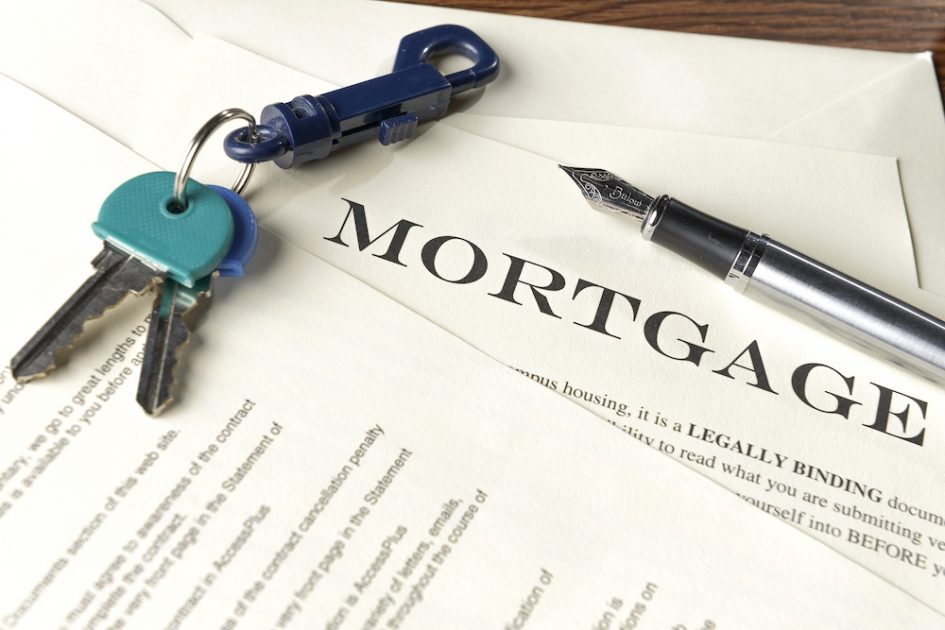20-Year Fixed Mortgage Rates: The Most Current Rates
If you want a stable and easily-budgeted option for home financing, you can consider a fixed-rate mortgage. These mortgages are highly popular because they’re predictable and perfect for long-term financial planning. While 30-year fixed loans are the most popular, lenders also offer 15-year and 20-year mortgages.
In this guide, we’ll cover 20-year fixed mortgages in-depth. We’ll go over what you need to qualify for a 20-year fixed mortgage as well as its strengths and weaknesses. We’ll also share tips on how to get the best mortgage rates and provide tools that give you insider access to the most current 20-year fixed mortgage rates.

Understanding Fixed-Rate Mortgages
Fixed-rate mortgages are a type of home loan that feature static interest rates for the entire life of the loan. Once you qualify for the loan at a certain interest rate, those rates will stay the same until you’ve fully paid the loan off.
These loans are also fully amortizing, which means once you make all your monthly payments, your loan is considered fully paid off. Because of its predictability and stability, most Americans opt for a fixed mortgage loan to help finance their home.
The most common term for fixed mortgages offered by lenders is the 30-year term, but you can also choose shorter loan terms like a 15-year or a 20-year term. Generally, lenders will give a lower interest rate for a shorter loan term. However, fixed-rate loans usually feature higher interest rates compared to other mortgage options because lenders may not be making as much money if market rates rise in the future.
What Is An Annual Percentage Rate?
When researching a loan, you may notice that your interest rate is usually given alongside something called an annual percentage rate (APR). While a loan’s interest rate represents a loan’s annual cost to the borrower, a loan’s APR represents your total annual cost which takes into account fees such as closing costs and origination fees.
Lenders are required to disclose a loan’s mortgage rate and annual percentage rate (APR) as part of the Federal Truth in Lending Act. By comparing the APR of two different loans, you can have a better idea of how much you’re paying for them.
Preparing Your Fixed Mortgage Application
Lenders take a risk every time they provide a loan. To ensure that the client can pay it off, they require proof that you won’t default on your loan. In this section, we’ll break down the main requirements to qualify for a fixed mortgage loan.
Credit Score
Your credit score represents your likelihood to pay back your loans, using your credit history as a measure. Your score ranges from 300 to 850 (Poor to Exceptional credit). Lenders typically use this score as one of your main determinants when considering your application.
Your score has a large influence on the rates you’ll receive on your mortgage loan. If you have a credit score above 800 you’ll receive the best rates. 620 is the bare minimum score most lenders require to qualify for a conventional mortgage.
Proof Of Consistent Income
Lenders also require their borrowers to have a consistent source of income to ensure that they can pay their loans. Usually, they’ll ask for proof of your income like pay stubs or tax returns. To qualify as consistent income, you’ll need to provide evidence that you’ve received this income for at least two years.
Down Payment
Most conventional mortgages require you to pay 20% down. For instance, if you’re applying for a $500,000 mortgage, you’ll need to pay $100,000 down.
While some lenders allow you to pay under 20% down, you’ll generally be required to buy private mortgage insurance to ensure that the lender is protected if you default on your loan.
Closing Costs
Lenders also require a closing cost when you qualify for the loan. Generally, the closing cost is valued at 2-5% of the home’s purchase price. You’ll need to pay this upfront, so make sure you have this amount of money at the ready to close the sale.

Benefits Of A 20-Year Fixed Mortgage
In this section, we’ll explain several strengths of 20-year fixed mortgages.
Predictability
A fixed-rate loan’s greatest strength is its predictability. Because 20-year mortgage rates are consistent for the entire life of the loan, you’ll pay the same amount each month. This stability allows you to have an easier time budgeting for long-term financial needs, reducing the likelihood of any financial surprises.
Potential For Larger Loan Amount
Because 20 years is a relatively long time period, you have a better chance at applying for a large loan without being saddled with an overly-expensive monthly payment amount compared to a 10-year or a 15-year fixed-rate mortgage. If your dream home is especially expensive, you can also apply for a jumbo mortgage that exceeds conforming loan limits.
Build Home Equity Faster
As you make monthly payments, you’ll own more and more of your home. By opting for a shorter term compared to a 30-year fixed-rate loan, you’ll be able to build your home equity more quickly. Once you have enough equity in your home, you can leverage it to pay for other expenses in the form of loans or a home equity line of credit.
Weaknesses Of A 20-Year Fixed Mortgage
Before applying for a 20-year fixed loan, you should understand that this loan type also comes with several weaknesses.
Lack Of Specialization
A 20-year fixed mortgage can be the “best of both worlds” option between 15-year and 30-year loans. A 20-year fixed loan allows you to experience lower interest charges (like a 15-year fixed loan) while allowing you to pay less money monthly (like a 30-year fixed-rate loan). However, you won’t enjoy the full extent of these benefits because you’re in the middle ground between the two other types of loans.
Higher Opportunity Cost
An opportunity cost is a benefit that you would’ve gotten if you made a different decision. Because you’ll be paying more on monthly payments compared to a 30-year loan, more of your money will be tied to mortgage repayments, and you may lose out on other investments such as retirement accounts or stock markets.

Is A 20-Year Mortgage Right For Me?
A 20-year fixed mortgage is often considered the middle ground between a fifteen-year loan and a thirty-year loan. Therefore, you can choose this loan as an alternative to the two extremes.
With a 20-year fixed-rate mortgage, you can pay off your loan faster than what a 30-year mortgage would allow as well as enjoy lower interest – similar to a 15-year mortgage. However, you should keep in mind that a 20-year mortgage doesn’t provide you the full benefits that a shorter or longer loan offers.
Most fixed mortgages, including a 20-year fixed-rate mortgage, are best suited for those planning to stay in the house for a long time. If you’re planning to move out or sell your home in the next few years, you can opt for an adjustable mortgage.
Refinancing Your 20-Year Mortgage
Refinancing a mortgage entails taking out another loan to pay off your current 20-year mortgage. This is usually done to reduce interest rates, shorten your mortgage term, or convert your loan from an adjustable mortgage to a fixed mortgage or vice versa. Refinancing is especially popular with fixed mortgage borrowers because your rates are static, and one of the only methods to reduce your mortgage rate is by refinancing.
If you already have a 20-year mortgage, you can either refinance into a shorter-term loan or take another 20-year mortgage. You can also refinance from a 30-year mortgage to a 20-year fixed-rate mortgage if you want to pay off your loan quicker.
However, you should keep in mind that you need to re-qualify for a loan if you want to refinance. You need to make sure that your credit score and other requirements are up to the lender’s standard for better rates. You’ll also need to calculate closing costs, lender fees, and refinance rates to ensure that you’re actually saving money by refinancing.

Alternatives To 20-Year Fixed Mortgages
In this section, we’ll cover the four main mortgage alternatives to a 20-year mortgage.
15-Year Or 30-Year Fixed Mortgage Loan Terms
Because a 20-year loan is considered the middle ground between a 15-year mortgage and a 30-year mortgage, it doesn’t feature the full extent of their benefits. If you need to pay off your loan quickly as well as enjoy a lower interest rate, you’ll find a better value with a shorter-term loan. Conversely, if you want to keep your monthly payments low and not stretch your finances too thin, you can opt for a longer-term loan.
Adjustable-Rate Mortgage (ARM)
Adjustable-rate mortgages feature a period of fixed interest rates for the first few years before the loan moves to its adjustable phase, where the rates are readjusted every year. Generally, these loans are best taken when the 20-year fixed mortgage rate is high because ARMs offer a lower initial interest rate.
While the adjustable period is often unpredictable, you can counter this unpredictability by refinancing. You can refinance your ARM into a 20-year fixed-rate mortgage before the initial introductory period ends, allowing you to take advantage of the savings at the beginning of the loan while avoiding the unpredictability of the adjustable period.
FHA Loans
Administered by the Federal Housing Administration, an FHA home loan is geared for low-to-mid-income homebuyers, thanks to its lower credit score and down payment requirements. To qualify for an FHA loan with a 3.5% down, you need a minimum score of 580. However, you can still qualify with a credit score between 500 and 579 if you pay 10% down.
While these loans are much easier to qualify for, you’ll be required to pay for private mortgage insurance – this protects the lender in case you default on your loan. This, however, increases your monthly payment amount.
VA Loans
If you’re a former or current military service member, you can get a VA home loan to finance your home. Issued by the Department of Veterans Affairs, these loans typically require no down payment and are guaranteed by the government. Because of the lower risk for lenders, they may be willing to offer more favorable loan terms.
However, VA loans can only be used for primary residences. They also have stricter property safety standards, and you’ll need to pay a funding fee that covers the government guarantee.

Getting The Most Affordable Mortgage Rates
Because a 20-year fixed-rate mortgage has static interest rates, you should try to qualify for the lowest rate possible. Here are four tips to drive your rates down.
Compare Loan Offers From Multiple Lenders
Mortgage lenders are always in competition for a borrower’s business. Therefore, they may offer lower rates or be willing to reduce their miscellaneous fees to attract customers. That’s why it’s essential to compare different lenders before deciding on one.
Lenders are required to provide a loan estimate, which are standardized documents containing the loan’s interest rate, APR, and closing costs. Once you have loan estimates from several lenders, you can compare them easier. While a lower interest rate and APR are important, you should also consider closing costs and other fees.
Consider Paying Discount Points
Lenders often offer discount points that lower your interest rate. These points are bought upfront, with each discount point typically worth 1% of the loan. These points reduce your rate by 0.25%.
For example, if your loan is worth $200,000 with a 2.75% interest rate, you can pay $2,000 to drive the interest down to 2.50%.
Look Into First-Time Home Buyer Programs
Depending on where you live, your state may offer assistance for first-time homebuyers. Your state may provide benefits such as down payment assistance and an affordable interest rate. Checking your city or county’s homeowner assistance programs may allow you to save on your mortgage.
Closing Thoughts
20-year fixed mortgages can be a viable home financing option, combining the benefits of a 15-year and 30-year loan. 20-year mortgages give you predictable monthly payments and allow you to build home equity quicker. You can also qualify for a larger loan compared to a 15-year mortgage because of the lower monthly payment amounts.
If you’re considering 20-year mortgages for your home purchase, Wesley Mortgage, LLC is here to assist you! Our team of financial professionals will advise you on how to find the best 20-year loan that fits your budget and requirements. Contact us today for more information!